The videos in this post are the first of a series that will explore the basics in mechanics. This series of posts and videos are aimed at high school students all around the world that wish to understand and use basic notions in mechanics.
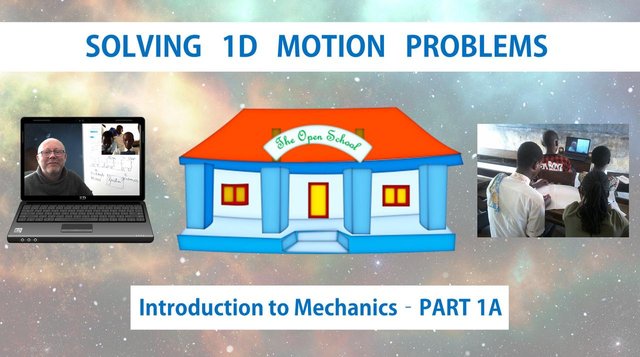
This lesson was initially prepared for students of a high school located in the state of Abeokuta Ogun (Nigeria) within the scope of the @openschool. However the poor internet connection obliged us to cease the live lesson. So, instead, I recorded a video based on what I had planned to discuss in the classroom.
I learned by their teacher (@obamike) that the visualization of these videos at the school was a success: the students were delighted of having learned a powerful and easy-to-use mathematical tool to solve all motion problems where the acceleration is constant.
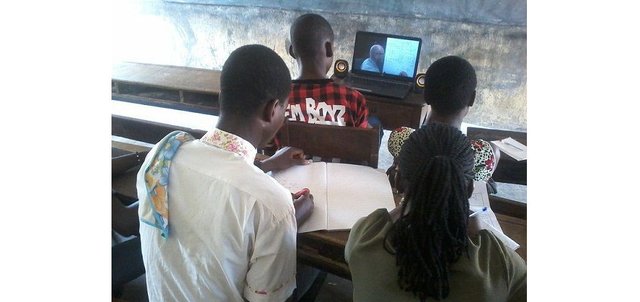
I am sharing this lesson here on Steemit for other students to enjoy. After all, the Openschool is the first high school of the Blockchain!
This series is intended for high school students thus, we will stick to the fundamentals. This makes it also a valuable opportunity for any scientist, student, engineer or researcher that wishes to refresh his or her basics to dive in!

1. THE VIDEOS OF THE LESSONS
You can view the videos directly from this post (click on the images below).
If you prefer reading, I re-transcribed the main ideas of the videos as text (see next section of this post).
The first video is the lesson itself, where I explain how to pose 1-dimensional problems in ‘SUVAT‘ form and what are the systematic steps required to arrive easily to a solution.
The two following videos are a training workshop where motion exercises are proposed followed by detailed solutions. If you want to give it a go, do not forget to pause the video after the exercise is given, try to figure out the answer yourself and then watch the solution.
2. INTRODUCTION TO MECHANICS (table of content)
In a few words one could define mechanics as the study of the interactions between macroscopic objects and their resultant motion. In this series, we will divide Mechanics into 4 subtopics.
Sub topic 1: Laws of motion (kinematics).
Imagine an object for which you know the position, the velocity and the acceleration at a given time, laws of motion allow you to predict position, velocity and acceleration at any other point in time, in the future and the past. We will learn here the SUVAT technique which is an ultra powerful tool to solve any motion problem as long as the acceleration is constant.

Sub-topic 2: Dynamics (laws of Newton)
The change in motion of an object is caused by the net force (net force = sum of all forces applied on object). In this section we will discuss how to make the inventory of forces that occur on an object at a given point in time (free body diagram), and how to use Newton’s laws to solve problems (the famous Fnet = ma).

Sub-topic 3: Work, Energy and Power.
Applying a force on an object results in accelerating the object, that is, changing its motion. By accelerating, the velocity of the objects changes, hence so does its kinetic energy. A force allows energy to be transferred (work to be done).
We will discuss in this section the fundamentals needed to fully grasp the notions of energy, work and power, and show how using associated properties like conservation of energy, can solve mechanics problems. That will make us realise that an approach using energy can in many cases replace using laws of motions: Like in real life, there are always multiple paths to a problem’s solution.

Sub-topic 4: Momentum
A force applied for a certain time is an impulse and result in a change of the quantity of motion of a body. The quantity of motion (the product of mass and velocity) is called momentum. Momentum has a very interesting property used in all areas of physics: in a closed system, momentum is always conserved, and that whatever the interactions between constituents of the system. A very powerful concept indeed that allows to solve a large variety of problems.
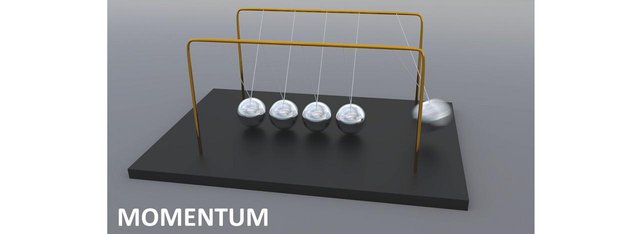
3. SECTION 1.1: Solving motion problems in one dimension.
1.1.a - Definitions.
Before we start diving in, let’s remind ourselves of a few definitions The displacement represents the change of position of a body. Displacement has a direction (it is a vector).

The velocity of an object is the displacement of an object per unit time. Velocity has a direction (it is a vector).

The acceleration of an object is the change in velocity of the object per unit time. Acceleration has a direction (it is a vector).


1.1.b – How to solve any motion question for which acceleration is constant.
The technique is extremely easy to use and with a little practice, a student can solve any problem in less than a minute!
Step 1: Make a drawing and define an axis with a positive direction.
Step 2: Pose the problem in SUVAT form.
The following table shows the notation used for displacement, initial and final velocity, acceleration and time.

Write down vertically s, u, v, a and t and then fill in the table. Write down a question mark for the data you are looking for. Fill in with a cross for the data you do not have but you are not looking for.

Step 3: Analyse your data and select the right equation.
If you have 3 variables, you are able to find the two others. There are 4 main SUVAT motion equations. Select the one that contains the 3 known variables and the unknown one.

Step 4: Rearrange the equation to put the unknown as object.
Plug in the numbers, calculate and… voila!
Note: If a = 0, the suvat equations will reduce to s = ut = vt.

1.1.c – An application example:
A car at rest accelerates at 3 m/s2 for 33 meters. What is its speed after the acceleration?
1 – Define positive axis in direction of car motion (grey arrow).

2 – Fill in the SUVAT data.

3 – Select an equation with s, u, a and the unknown variable (v).

4 – Solve for the unknown variable:

Try it now: Find the time it takes for the car to reach this speed (answer: 4,7 s).

1.1.d – Exercises
These exercises and the related corrections are presented in the videos. I created these exercises specifically for this lesson.
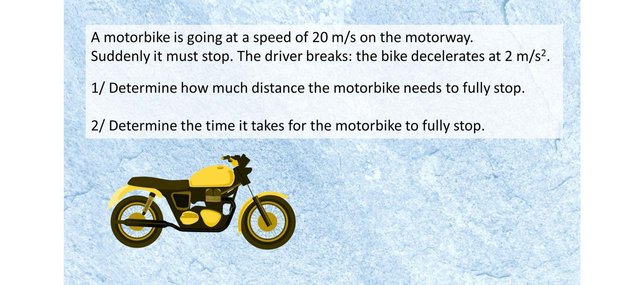
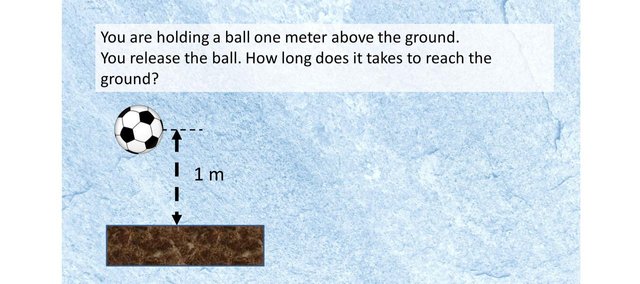
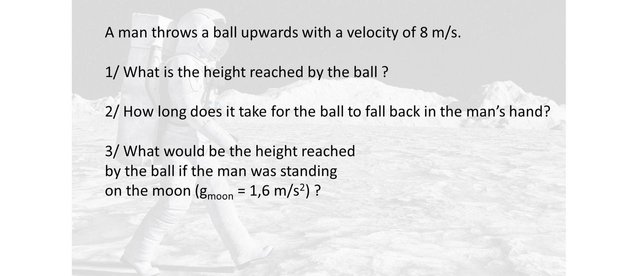

Image credits:
Image of students attending the lesson: @obamike
Other illustrations and images: Pixabay.com



Hi,
I’m @muphy (see intro post),
My life revolves around music production, teaching sciences, and discovery through travel.
You enjoyed that post? Resteem and Upvote!
You are interested in these topics? Follow me!
Boy, this brings back memories! 😁
Downvoting a post can decrease pending rewards and make it less visible. Common reasons:
Submit
wonderful work you are doing leading by an example :)
Downvoting a post can decrease pending rewards and make it less visible. Common reasons:
Submit